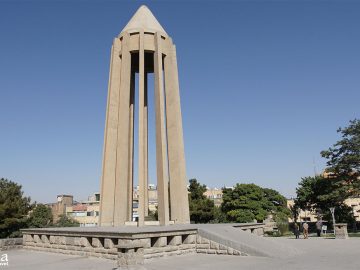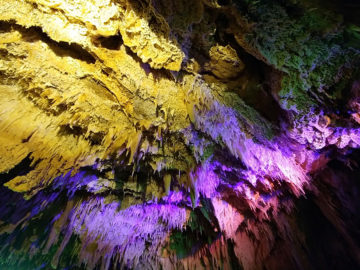Hamedan province, with an area of 19,368 square kilometers, is the 22nd largest province in Iran. Its neighbors include Zanjan, Qazvin, Lorestan, Markazi, Kurdistan, and Kermanshah provinces.
This province with Hamedan city as its center contains nine counties, where Farsi is the dominant language but because of the existence of different ethnic groups, other languages such as Turkish are also usual. The Zagros Mountain ranges cover Hamedan province with Mount Alvand at the highest altitude. In terms of climate, the province is cold in winter and mild in summer.

The land of Hamedan has long been the place of ancient civilizations. According to the remains of prehistoric monuments, Hamedan used to be on the way of caravans between the East and Mesopotamia, leading to its flourishment as a connecting center. Following the arrival of the Muslim Arabs in Iran, they also attacked Nahavand and defeated the locals while their commander was killed in this battle.
The conquest of Nahavand opened a way for Muslims to capture the Sassanid realm, introducing this conquest as Fath-al-Fotouh which literary means the Victory of Victories. Arab geographers entitled the land of Hamedan “Jebal”, suggesting it as the firmest city of the region which included a part of the Median Empire’s (678-549 B.C.) land as well.
During the 10th century, Hamedan turned into a large city by the Arabs after its capture and this significance was kept during the Ilkhanate dynasty (1256-1335) as well. This area was also of interest by the following dynasties including Jalairid (1335-1435), Timurid (1370-1507), Aq Qoyunlu (1378-1501), Safavid (1501-1736), and Ottoman since they all occupied the city of Hamedan as a part of their territory.
This made frequent wars, for example, Nadir Shah (reign: 1736-1747) pulled out Ahmed Pasha, the Ottoman governor of Baghdad, from the area in a battle. Some years later, at the beginning of the Qajar Era (1796-1925), Agha Mohammad Khan captured Hamedan and destroyed the citadel of the city. During the First World War, the Ottoman Empire, the Russian, and the British alternately invaded the land of Hamedan and its cities.
Hamedan province is of particular importance because of its rich natural and historical resources. The tombs of some known Persian poets including Baba Tahir, Aref Qazvini, and Abu Ali Sina (Avicenna), inscription and Waterfall of Ganjnameh, Ali Sadr Cave (Iran’s only water cave), Lalejin pottery workshops, Alavian dome, and the tomb of Esther and Mordechai are among a few numbers of the province’s attractions.
The city of Laljin was registered by UNESCO as Iran’s capital of pottery in 2016.
The most prevailing handicrafts of the province are pottery and ceramics, carpet weaving, Give-Doozi (a kind of traditional shoes), woodcarving, Moj-Bafi, Fur clothing Tanning, leather-made artifacts, and Ajideh Doozi. The eatable souvenirs of the province include honey, almond Gaz, animal oil, walnut, grape syrup, walnut halva, pickled cucumber, and dried mulberry.
Some of the local cuisines of the province include different kinds of Aush (a type of soup), Ghormeh (stew) and Cabbage Abgoosht, beans and greengage stew. Of Hamedan’s most notable figures we can mention to Rashīd al-Dīn Faḍlullāh (Ilkhanid historian and minister), Ayn-al-Qużāt Hamedānī (Mystic, Philosopher, and poet) and Mir Sayyid Ali Hamedani (Sufi and Poet).


